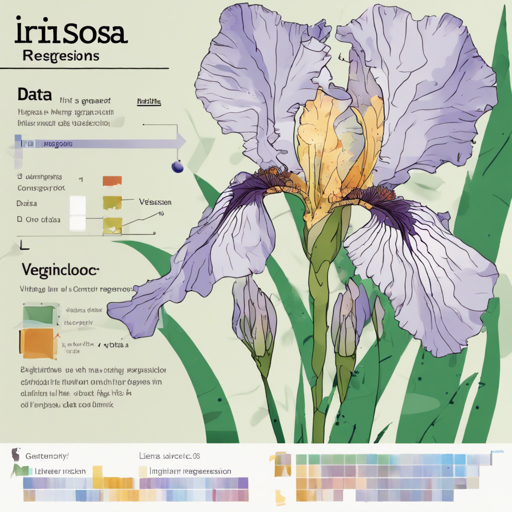Building predictive models can often feel like piecing together a puzzle. In this article, we’ll explore how to create a Linear Regression model using the famous Iris dataset. This straightforward tutorial will guide you through the steps, ensuring you feel comfortable and confident in your programming skills!
Understanding the Iris Dataset
The Iris dataset is a classic in machine learning, often used for classification problems. It comprises various features of iris flowers, which makes it an ideal starting point for data analysis and model-building. In this instance, we’ll focus on sepal length and sepal width as our features.
The Code Explained
Let’s break down the code you’ll be using, metaphorically speaking, like assembling the ingredients for a delicious recipe. Each part serves a specific role in your modeling process, with the dataset acting as your foundational ingredient.
import numpy as np
import pandas as pd
from sklearn.linear_model import LinearRegression
# Sample data
data = pd.DataFrame({
'sepal_length': [6.3, 6.5, 5.6],
'sepal_width': [3.3, 3.0, 2.5]
})
# Prepare data
X = data[['sepal_length']]
y = data['sepal_width']
# Create the model
model = LinearRegression()
model.fit(X, y)
# Make predictions
predictions = model.predict(X)
print(predictions)
- Import Libraries: Here, we import essential libraries such as NumPy and Pandas, along with the Linear Regression model from scikit-learn. Think of this as gathering tools needed before starting your cooking.
- Set Up Your Data: We create a DataFrame to hold our sample data points, much like laying out ingredients on your kitchen counter.
- Prepare Data: We separate features (sepal length) and target variables (sepal width), similar to sorting out the components for a recipe.
- Create and Fit the Model: We initialize the Linear Regression model and fit it to our data—consider this the mixing step in your cooking process where everything comes together.
- Make Predictions: Finally, we use the model to predict sepal widths based on the fitted values. Voila! You’re now able to forecast new values, or serve the dish you just prepared!
Troubleshooting Tips
While you’re on your way to mastering Linear Regression, there might be a few bumps along the road. Here are some troubleshooting ideas:
- Data Types: Ensure your data types are correct, specifically that your features are numerical arrays. If you encounter errors, check the data formats.
- Library Installation: If you haven’t installed necessary libraries (like sklearn), use pip to install them:
pip install sklearn pandas numpy - Model Not Converging: If your model isn’t performing well, consider scaling your data or checking for outliers. This adjustment can help bring the model back into shape!
- For more insights, updates, or to collaborate on AI development projects, stay connected with fxis.ai.
At fxis.ai, we believe that such advancements are crucial for the future of AI, as they enable more comprehensive and effective solutions. Our team is continually exploring new methodologies to push the envelope in artificial intelligence, ensuring that our clients benefit from the latest technological innovations.
Conclusion
Congratulations! You’ve successfully navigated the process of creating a Linear Regression model with the Iris dataset. Just like in cooking, practice makes perfect, so don’t hesitate to experiment with different datasets and methods!

